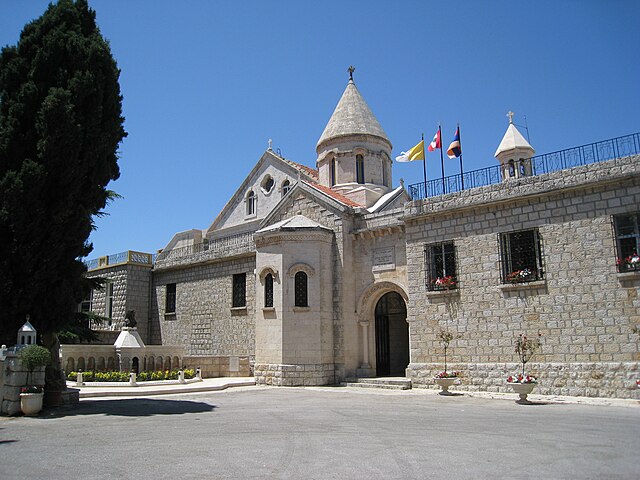Armenians have lived in Lebanon for centuries. According to Minority Rights Group International, there are 156,000 Armenians in Lebanon, around 4% of the population. Prior to the Lebanese Civil War, the number was higher, but the community lost a portion of its population to emigration.
Around 10,000 Lebanese-Armenians marching on April 24, 2006, on the 91st anniversary of the Armenian genocide
Headquarters of the Armenian Catholic Patriarchate in Bzoummar
Camp of Armenian exiles in Beirut
Around 10,000 Lebanese-Armenians marching on April 24, 2006, on the 91st anniversary of the Armenian genocide
Armenians are an ethnic group and nation native to the Armenian highlands of West Asia. Armenians constitute the main population of the Republic of Armenia and constituted the main population of the breakaway Republic of Artsakh until the 2023 Azerbaijani offensive in Nagorno-Karabakh and the subsequent flight of Nagorno-Karabakh Armenians. There is a wide-ranging diaspora of around five million people of full or partial Armenian ancestry living outside modern Armenia. The largest Armenian populations today exist in Russia, the United States, France, Georgia, Iran, Germany, Ukraine, Lebanon, Brazil, Argentina, Syria, and Turkey. The present-day Armenian diaspora was formed mainly as a result of the Armenian genocide with the exceptions of Iran, former Soviet states, and parts of the Levant.
Hayk, the legendary founder of the Armenian nation. Painting by Mkrtum Hovnatanian (1779–1846)
The Cathedral of Ani, completed in 1001
Ptolemy, Cosmographia (1467)
Persis, Parthia, Armenia. Rest Fenner, published in 1835.







